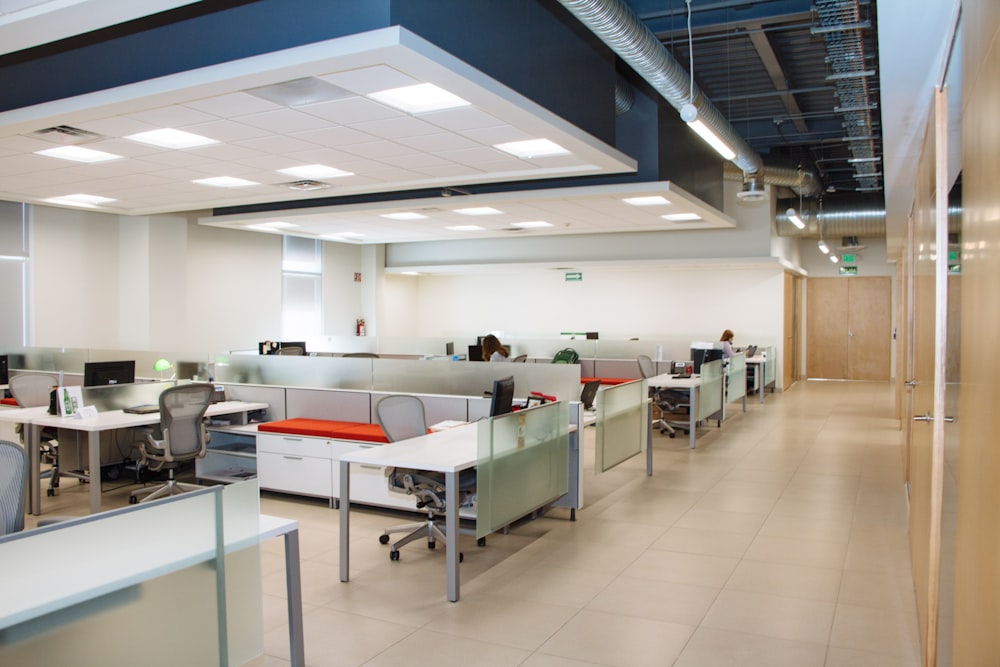
The Birth of Open Offices
In 1906, Frank Lloyd Wright designed the Larkin Administration Building, the first modern office, and then the first open-plan office building for SC Johnson Wax in 1936.
Te goal of these new office layouts was to maximize productivity, which was the obsession of consultant and “management experts” like Frederick Taylor during the second half of the 19th and early 20th centuries.
But it wasn’t until the 1960s that the open office became a popular design for workplaces. The idea was that of democratizing the workplace and create more interaction between colleagues.
When the graphic artist and sculptor, Robert Propst became president of Herman Miller Research Corporation in 1960, he decided to investigate how the world of work operated, and he concluded that “today’s office is a wasteland. It saps vitality, blocks talent, frustrates accomplishment. It is the daily scene of unfulfilled intentions and failed effort.”
The results of company’s answer was the debut of the Action Office, which was arguably the first flexible cubicle space, because it offered an alternate work setting with some privacy while still not restricting movement.
There was some backlash to the open office as more women entered the workforce in the 1960s and ’70s, and the open offices went through a process of evolution, including a new design feature that was called a “modesty panel”, which covered the front of the desk so the female workers could wear their skirts without being on view (read the Observer’s article from 1968).
From those beginnings the concept of the open office developed into the mass production of what we now know as cubicles.
The Open Office Before COVID-19

Many corporations adopted and still adopt open offices because they save money. Open-plan offices save money by reducing the square footage each employee requires to work. Moreover, an open-plan office makes a company look innovative, even when it is not.
This is why this layout has been so prevalent for decades. However, research suggests that open-plan spaces may be bad for workers.
For example, a 2018 study out of Harvard Business School found that moving to open offices leads to a decrease in face-to-face interactions between employees, with the number of emails and messages shooting up.
In another report, researchers from the University of Sydney found that the the disadvantages of open plan offices, such as a major lack of privacy, outweigh the supposed benefits of easy communication.
Similarly another article by the FastCompany explains that
open offices can also make employees less productive, especially people who need to focus on execution-based tasks. These offices are so distracting, in part, because they lack acoustic privacy. That means that you can overhear every one of your neighbor’s phone calls and conversations. It’s a problem for creative people in particular, as a 2018 survey of creatives showed: 65% of creative people need quiet or absolute silence to do their best work. Open offices can’t deliver on that desire.
Open offices also tend to lack any kind of personal privacy–and that has an outsized affect on women.
The Open Office After COVID-19

The open office was already accused of being distracting and intrusive, but now is also a potential health hazard.
Many companies are now thinking about how they might change their workspaces. Some experts believe the open floor plan could be simply modified and improved by taking into better consideration the employees’ needs for privacy and considering stricter cleaning schedules. Others, however, believe that the pandemic is the final blow for the open office.
A survey of 250 tech companies conducted by the commercial real estate firm Savills in August and September found that the COVID-19 pandemic has had a significant impact on many companies’ plans for office space and workforce growth in the near term.
Before the onset of the pandemic, 46% of respondents said their offices were entirely open plan, with either bench seating or cubicles. Looking to their plans going forward, fewer than half of them—only 22% of respondents—said they would continue to keep their open office plan. Even those respondents with a mix of mostly open plans plus some private offices said they’d be likely to change things going forward; about a quarter of respondents said they’d change things in the near future.
According to the survey, offices may also be getting smaller, with more than 80% of respondents saying they expect to need less office space in the next 12 to 18 months. (Fast Company)
At the end, for many employers, the best solution will be simply having many employees continue to work at home, instead than going through extensive remodeling of their offices. This solution will keep people safe and save money.
So, is the open office finally on its way out? Perhaps the pandemic will finally make happen what open-plan opponents have been hoping for a long time.
